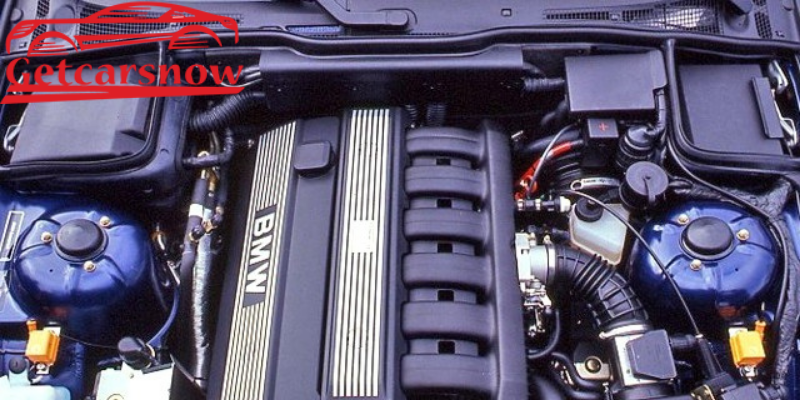
How To Look After Your Turbocharged Car
Despite the fact that turbocharged automobiles have been around for a long time. They are nonetheless more complicated than the ordinary road car. Especially while computer-controlled engines don’t require as much maintenance as previous turbo-powered vehicles. It’s still worth paying attention to the system’s upkeep. Even if you have a modern automobile, guarantee it lasts as long as possible. We will be discussing how to look after your Turbocharged Car.
Three components are needed for engine combustion: fuel, ignition, and oxygen. Turbocharging works similarly to a hairdryer in that it delivers additional air into the pistons to maximize the energy of the fuel in a short period of time. The system accomplishes this by drawing in air from outside the vehicle and feeding it into the turbocharged engine via a turbine that is driven by exhaust emissions. Because of the heat, pressure, and motion in the system. It is more prone to breakage and failure, therefore extra caution is required when utilizing a turbocharged engine. Let’s look at the methods to look after your Turbocharged Car.
Table of Content
- Oil
- Warm Up the Engine
- Cool Down
- Use Gear Over Turbo
- Conclusion
Oil
The oil keeps the working parts of your turbo lubricated. And your engine needs a steady supply of the appropriate sort of high-quality oil to function properly. Before you buy oil. Check your vehicle’s owner’s manual to be sure you’re getting the proper API grade for your engine. The oil keeps the working parts of your turbo lubricated. And your engine needs a steady supply of the appropriate sort of high-quality oil to function properly. Before you buy oil, check your vehicle’s owner’s manual to be sure you’re getting the proper API grade for your engine.
Turbocharged engines have moving components that rotate at extremely high speeds and operate under extreme heat and pressure. To prevent wear and help them operate at their best. Turbocharged engines require a continual flow of high-quality engine oil to lubricate the compression valve and intake and output fans. The importance of engine oil is so great that some high-end turbo systems include a separate oil reservoir that circulates oil throughout the turbo. Fully synthetic oil is recommended, and changing oil every 5,000 miles is the best way to avoid oil-related problems with your turbocharger and engine.
Warm Up the Engine
Oil in your automobile can function at the needed level to keep the turbo lubricated for that It must first warm up. Before operating the turbo at higher speeds, it is recommended to run the car for 5 to 10 minutes to get everything up to the correct temperature levels. Allow the engine to warm up to its full capability to reduce the danger of turbo damage.
This is because the cold oil is thickest when you first start the Car. Therefore the oil pressure has to be higher to circulate it around the engine. The oil seals are put under additional strain as a result of this.
Oil temperature rises in tandem with engine temperature. This thins the oil, allowing it to flow more easily and lubricate your engine’s moving parts. Oil takes time to heat up than engine coolant. So put your right foot down at least 10 minutes after your coolant has achieved optimal temperature.
Cool Down
If the engine has been driving at high speeds and come to a quick halt, the turbo might still be hot. If the motor is turned off too fast then the heat may be a trap with nowhere to escape safely. This heat may actually heat up the turbo oil, converting it into a thick, worthless, and sticky sludge that can clog the system, causing damage and, in the worst-case scenario, rendering it unusable. Simply keep the engine running on idle for a few minutes at the conclusion of the drive. Allowing the turbo to cool down safely rather than being shocked by a rapid lack of heat, before shutting it off.
While running, turbos generate a lot of heat, and if you turn off the engine right away. The leftover heat can boil the oil in the turbo system. Resulting in a build-up of carbon particles that can lead to corrosion and premature engine wear.
After driving, get into the habit of leaving the engine running at idle for a few minutes to allow the turbo to cool down sufficiently to turn off the engine without burning the oil.
Use Gear Over Turbo
When the engine has that extra mph, it’s easy to fall into the trap of relying too heavily on the turbo. Sometimes, pushing for more overtaking power might be beneficial in some situations, but keep in mind that the transmission and gear system are the best ways to gain more power from your engine. When possible, use the gears to get extra speed rather than relying on the turbo, as this might cause premature wear on the component.
Downshifting into a lower gear is a safer long-term choice than depending only on the turbocharger. Whether you’re going up a long hill, overtaking on a highway, or accelerating into the fast lane on the highway. Gears were designed to improve performance up and down the rev range. Thus putting a mix of gear changes and turbo boost will help to reduce turbo system wear and tear.
Driving in this manner puts needless strain on your turbocharger. So take a breather and shift down a gear while passing or ascending hills to help it last longer.
Conclusion
We’ve discussed how everyone wants speed and enhanced automobiles, and turbocharged engines can help us achieve our goals. However, in order to prolong the engine’s life, modern turbocharged engines require considerable attention, care, and maintenance. A slight lapse in judgment can result in a significant increase in the turbo system’s wear and tear. These checks may tell you how hard you can push the turbo, what sort of oil to use, and even where the heat dissipates within your car, all of which can help you develop a clear picture of how to maintain and operate this high-performance system. The information provided above will assist you in maintaining your 1Turbocharged Car engine.


